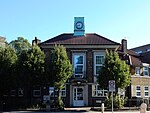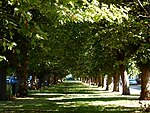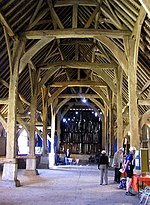St Catherine's Church, West Drayton
1867 establishments in England19th-century Roman Catholic church buildings in the United KingdomChurches in the Roman Catholic Diocese of WestminsterCommons link is the pagenameGothic Revival church buildings in London ... and 5 more
Grade II listed buildings in the London Borough of HillingdonGrade II listed churches in LondonReligious organizations established in 1867Roman Catholic churches completed in 1869Roman Catholic churches in the London Borough of Hillingdon

St Catherine's Church or St Catherine of Alexandria Church is a Catholic parish church in West Drayton, Borough of Hillingdon, London. It was built from 1868 to 1869 and designed by Thomas John Willson and Samuel Joseph Nicholl. It is architecturally in the Gothic Revival style and was paid for by the Irish immigrants living in the west Drayton area. It is situated on The Green near the town centre. On 12 May 2016, it was designated a Grade II listed building.
Excerpt from the Wikipedia article St Catherine's Church, West Drayton (License: CC BY-SA 3.0, Authors, Images).St Catherine's Church, West Drayton
The Green, London Yiewsley (London Borough of Hillingdon)
Geographical coordinates (GPS) Address External links Nearby Places Show on map
Geographical coordinates (GPS)
| Latitude | Longitude |
|---|---|
| N 51.5043 ° | E -0.4763 ° |
Address
St Catherine
The Green
UB7 7PH London, Yiewsley (London Borough of Hillingdon)
England, United Kingdom
Open on Google Maps









